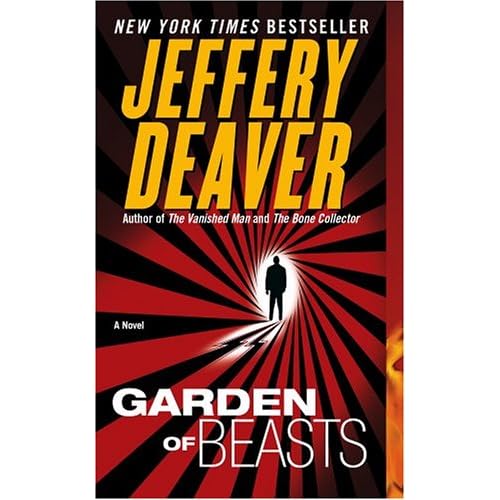I do have to say, the Abes books blog is pretty great. I don't know what following it has, but Richard Davies is a model blogger. Here is the link:
http://www.abebooks.com/blog/. He is short, sweet and interesting.
So, back to book business, we meet and discussed
The Lunatic Express: Discovering the World . . . via Its Most Dangerous Buses, Boats, Trains, and Planes
this weekend, and concluded that Carl Hoffman was a self centered skunk. This conclusion was made without excessive adult beverage. However, most everyone liked the book in spite of the authors disregard for caring for his family. It certainly shed a lot of light on what a rich, luxurious life we all lead.
The book that won our vote for next bookclub is
In the Garden of Beasts: Love, Terror, and an American Family in Hitler's Berlin.
I have to say, the around the world theme for lunch was awesome. In addition to the recipes below, there were lamb kabobs, fruit salad, some orange wine drink, Chinese chestnuts, tamales and probably some other yummy thing to eat that I'm not recalling. Here is a smattering of some of our fare. I have to say, these recipes were delicious. Matter of fact, as I'm typing this, Wat is cooking away in my crock pot for this evenings meal!
KHEER Serves 4
(Rice Pudding with Cardamon and Pistachios)
Rich, reduced-milk rice puddings are popular in many parts of India, under various names; kheer is most common.
5 cups milk 6-8 tbsp. sugar
1/4 - 1/3 cup 2 tbsp. shelled peeled
basmati rice, rinsed pistachios, chopped
6 cardamom pods 1/4 tsp. rose flower
water
1. Put milk, rice and cardamom into a medium pot and bring to a boil over medium-high heat, stirring frequently. Reduce heat to medium and simmer, stirring often, until milk has reduced by one-third, 15-20 minutes.
2. Add sugar, 1 tbsp. of the pistachios and rose flower water and stir over medium heat until sugar dissolves, 1-2 minutes, then transfer to a bowl. Cover and refrigerate until well chilled. Discard cardamom pods.
3. Finely chop the remaining nuts, Serve pudding in small bowls garnished with pistachios.
I used almonds and a few raisins which I have seen used in this pudding in various Indian restaurants here. I prefer the flavor of the almonds with the sweet rice.
Futari
A tasty combination of squash, yams, and coconut milk. Squash and yams are very common in Africa.
one onion, chopped
one pound squash, peeled and cut into bite-sized cubes
a pound or two of yams (sweet potatoes may be substituted), peeled and cut into bite-sized cubes
oil
one cup coconut milk
one-half teaspoon ground cinnamon
one quarter teaspoon ground cloves
salt to taste
Fry onion in skillet, stir and cook until tender. Stir in all other ingredients, and heat to a boil. Reduce heat, cover and stir occasionally. Cook until vegetables are tender (ten to fifteen minutes).
Wat (Meat Stew), Ethiopia
from Favorite Recipes from the United Nations, published by the United States Committee for the United Nations, Washington, D.C., 1956
1/4 pound butter
2 cup chopped onion
1 cup water
2 pounds boneless beef, lamb or veal (cut into 1-linch pieces)
1 teaspoon salt
1/8 teaspoon red pepper
1 teaspoon black pepper
1 tablespoon cornstarch
1/2 cup cold water
4 cup hot buttered noodles (optional)
Melt half of butter in a heavy saucepan, add onions, and cook over medium heat until onions are soft. Mix in remaining butter and water, and cook uncovered for 5 minutes. Add meat and seasonings. Cover pan and simmer mixture for 1 to 1 1/2 hours or until meat is tender. To thicken sauce blend 1 T of cornstarch with 1/4 cup cold water. Add to hot stew and continue cooking, stirring constantly, for about 5 minutes. This flavorful stew would be good served over cooked buttered noodles. Crisp rolls, a green salad, fruit dessert, and beverage, would be a fine choice to complete the meal. Yield: 6 to 8 servings.
This recipe is verbatim from the cookbook. This is what I did was:
I used white onion, and cut up sirloin beef (super lean, as I cut out as much fat as possible) for the meat. After making the onion mixture, I put everything in the crock pot around midnight, and it was ready seven hours later when I got up. I thickened it with 2 T of cornstarch, and served it over boiled whole wheat noodles with no added butter. I think it was really good, and will make it again. Cooking the onions in butter and not browning the beef made it a little different.







